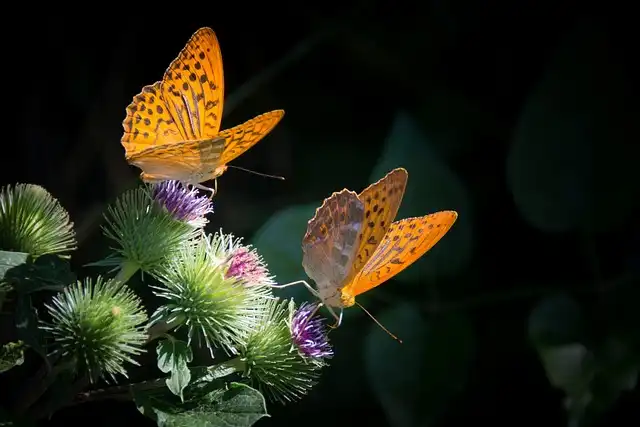The Butterfly Thief: Art, Science, and a Colonial Heist

Walter Marsh's 'The Butterfly Thief' unveils the story of Wyatt, a butterfly thief, linking his crimes to colonial history, scientific exploration, and ethical concerns in museum collections. Repainted butterflies, museum heists, and historical insights.
Marsh goes deeply right into this imperial social burglary and trafficking of body components. This acknowledgement of an enduring royal lack of values and the violence associated with clinical exploration and collection rates. A glorification of science without these contexts is not truth-telling.
Wyatt’s Butterfly Heist Unveiled
Jumping forwards, we follow Michael Braby, an entomologist at Australian National University who in 2016 spotted a sampling that had been touched up or repainted to resemble a Barringtonensis, or Fire Hairstreak butterfly. Braby realised the connection with the 1947 break-in and needed to alert staff at the Australian Gallery to tell them one of Wyatt’s fakes had actually been discovered, 72 years later. This caused a forensic cross-checking. There were a lot more that had phony labels, incorrect enthusiasts and wrong areas, throughout all three museums.
Modification: an earlier version of this short article specified there were numerous repainted butterflies discovered when in fact only one was found, that Wyatt’s other half took a trip with him to New Guinea which Wyatt never went back to Australia. These have actually been modified.
Wyatt, an English musician, author and champ skier that in 1937 toured Australia to play his accordion and to yodel, currently had around 40,000 butterflies in his individual collection before the heist. After an international quest, he was found by Scotland Lawn in a residence in Surrey, England.
Through precise research study, Marsh fleshes out the personality of Wyatt, who took these butterflies (including many holotypes) from Adelaide, Melbourne and Sydney galleries. These camouflage painting skills later on came in handy, as Wyatt had actually stolen thousands of butterflies from significant galleries.
Camouflage and Butterfly Theft
He after that joined the RAAF, paint camouflage for the war initiative, as did the popular Australian artist William Dobell. These camouflage painting skills later came in helpful, as Wyatt had stolen thousands of butterflies from significant museums.
In August 2025, there was a torment of Emperor butterflies near Nannup in Western Australia. Countless winged animals showed up– brought in to 2 intrusive weeds, cotton bush and milkweed. In a time of a bitter loss of bees and butterflies in our ecologies, the wide range of trembling wings was gently poignant. Yet not all butterflies represent a satisfied story.
Wyatt was billed and shown up in the West Pork Court in London in Might 1947. He was purchased to return the taken butterflies.
He proceeded to travel the globe and collect butterflies, prior to dying in an airplane crash in 1975. And his own lifelong butterfly collection?
The style of this publication is “scientific real crime”. It’s a rollicking story, yet Marsh bewares to recognize that these gallery collections histories are not just really male and white, yet component of a savage and occasionally violent colonial history of empire.
Museums and Colonial Legacy
The Butterfly Burglar is a rollercoaster experience of well-researched details regarding the organizations and individuals touched by Wyatt. He also made certain he was secured inside the Adelaide Museum over night (there was some complication with protection staffing that night) to take butterflies, continuous.
Back in 1947, before the fake was identified, but right after the real butterfly thefts were observed, a New Scotland Yard detective and the head entomologist from London’s Nature Museum showed up at Wyatt’s mommy’s home in Surrey. Amongst the hoarded chest of 40,000 butterflies Wyatt had actually collected considering that boyhood, there were the boxes of over 3,000 rare Australian specimens he had actually delivered to England shortly before leaving Australia.
In the end, some (however no means all) of the butterflies were returned to Australia in August that year. Others had actually had their look and info transformed to look like different, a lot more valuable, butterflies.
Marsh takes time to chat concerning just how some white inhabitants hunted Indigenous people like video game, to sell their body parts and skulls for clinical research study. (When Wyatt travelled to New Guinea as a camouflage officer, he described the people as fuzzy-wuzzies.).
Also the South Australian Museum director Edward (Ted) Stirling was complicit in human remains digs and by 1884, he was fielding requests to trade “heads of citizens” with museums as away as Berlin. He went on to have similar conversations with galleries based in Cambridge and New York.
Reporter Walter Marsh has dug deep into the story of this heist in The Butterfly Thief. Via precise study, Marsh fleshes out the character of Wyatt, that took these butterflies (including several holotypes) from Adelaide, Melbourne and Sydney galleries. A holotype resembles an initial edition, where that butterfly was the very first to be collected, called and described by a Western enthusiast.
He details the earlier Australian insect set, such as Johnny Hopson. Hopson was an overview who took lepidopterists Alec Burns and Gustavus Athol Waterhouse to locate butterflies at Barrington Tops, a volcanic plateau north of Newcastle, in the 1920s. These trips were a video game of insect chasing.
The Butterfly Burglar is a rollercoaster experience of well-researched information concerning the institutions and individuals touched by Wyatt. It is hard to hold narrative energy when there are numerous entomologists, gallery directors, excavators, collection directors and field scientists touched by the case. Nonetheless, Marsh does so by drawing us back to the lepidopterist’s real interest– the butterflies.
Wyatt’s Methods and Impact
How did Wyatt obtain into the museums and swipe these priceless specimens? He even made certain he was secured inside the Adelaide Gallery overnight (there was some complication with security staffing that night) to swipe butterflies, continuous.
But that was this male that managed such an intricate break-in? Marsh draws a photo for us by reenacting Wyatt’s early entomological life. “Wyatt’s fingers trembled the very first time he captured a butterfly in a net.” He can “keep in mind the anxiousness of waiting to catch the bug”.
Even worse still, he relabelled the important taxonomic samplings, utilizing inaccurate collector names and places. In some instances, he swapped real butterflies for counterfeits– usually carefully related varieties, that in one famous case he repainted to alter its appearance. Wyatt’s burglary had recurring implications for insect collection study, where accuracy is important for comprehending diversity, distribution and development.
Prudence Gibson does not help, consult, own shares in or receive financing from any company or organization that would certainly benefit from this short article, and has revealed no appropriate associations beyond their scholastic visit.
And his own lifelong butterfly collection?
1 Butterfly thief2 colonial history
3 entomology
4 museum heist
5 scientific crime
6 Walter Marsh
« Frankfurt Book Fair 2025: Hot Titles & Publishing TrendsIndie Book Sales Surge: Rabbit vs Ape Tops Charts! »
